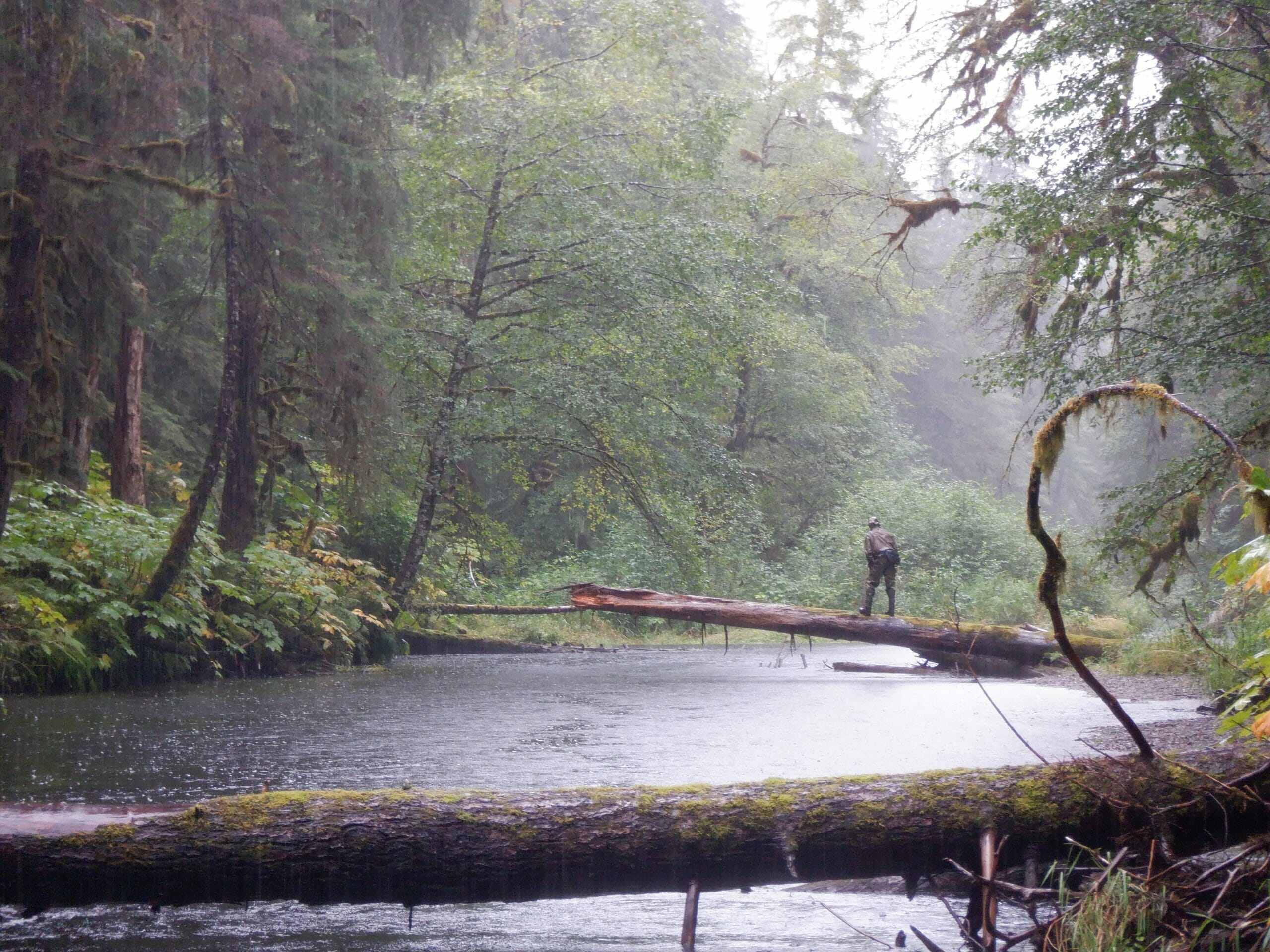The Forest Service’s Roadless Rule makes this possible: Amazing fishing for trout and salmon in an old growth forest
Like others before it, the trail eventually petered out.
And, like we had done before, Chris Hunt, Sam Davidson and I huddled to talk about our options.
Someone said, “The road should be that direction so we can just bushwhack and should be there before too long.”
Someone else said, “We can walk back toward the creek and I’m sure we’ll find another trail.”
Yet someone else said, “Let’s just get all the way back to the creek and follow it back upstream.”
Valid suggestions, all, but not necessarily appealing suggestions.
We were deep in the rainforest on Alaska’s Prince of Wales Island, working our way back toward our vehicle after an afternoon of incredible fishing on a smallish creek brimming with big Dolly Varden, and pink and coho salmon.
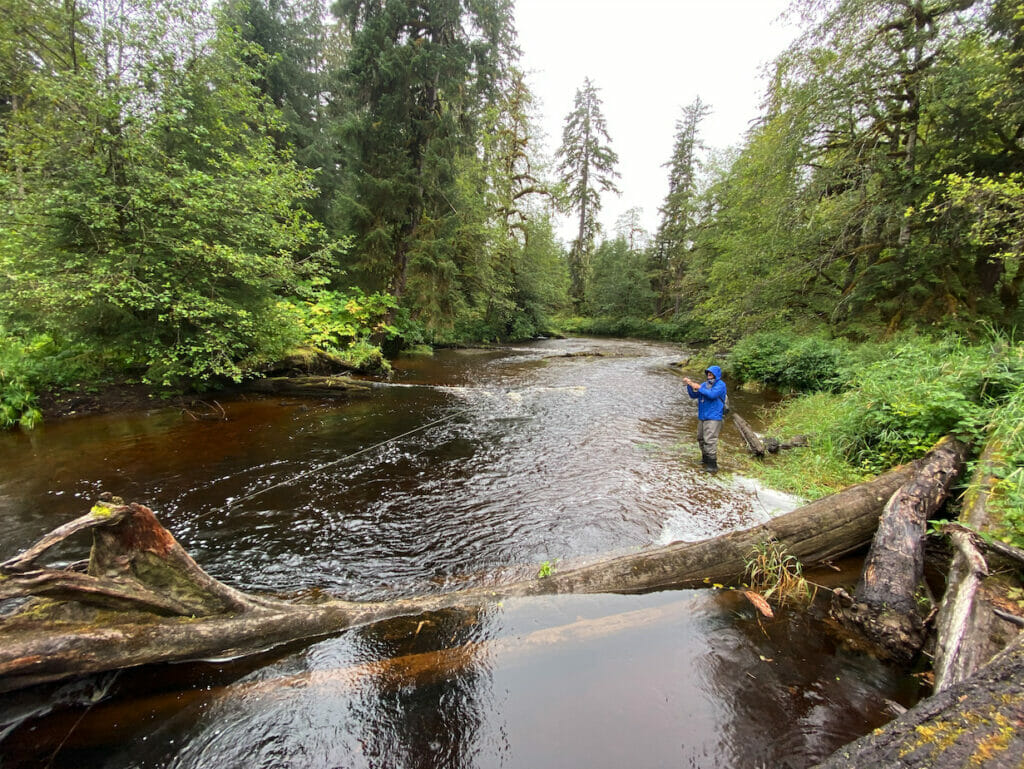
This DIY vacation was my first trip to Prince of Wales which, as part of the Tongass National Forest, helps support some of the nation’s most important native salmon runs.
Trout Unlimited has been working for years to support protections for the Tongass, particularly in advocating for reinstatement of the Roadless Rule for the Tongass, which was exempted from the rule in 2020. The rule prohibits commercial logging and new logging roads in 9.4 million acres of roadless areas on the Tongass, which at 16.7 million total acres is the largest national forest in the U.S.
The U.S. Department of Agriculture recently announced a plan to eliminate that exemption, a move Trout Unlimited wholeheartedly supports. A public comment period on the proposal is currently open and we are encouraging members and supporters to submit comments.
Logging has made a massive impact on Prince of Wales, which has lost more than 90 percent of its old growth forests to timber harvest. Today the landscape is dotted with clearcuts as well as impenetrable young forests that will take decades to mature.
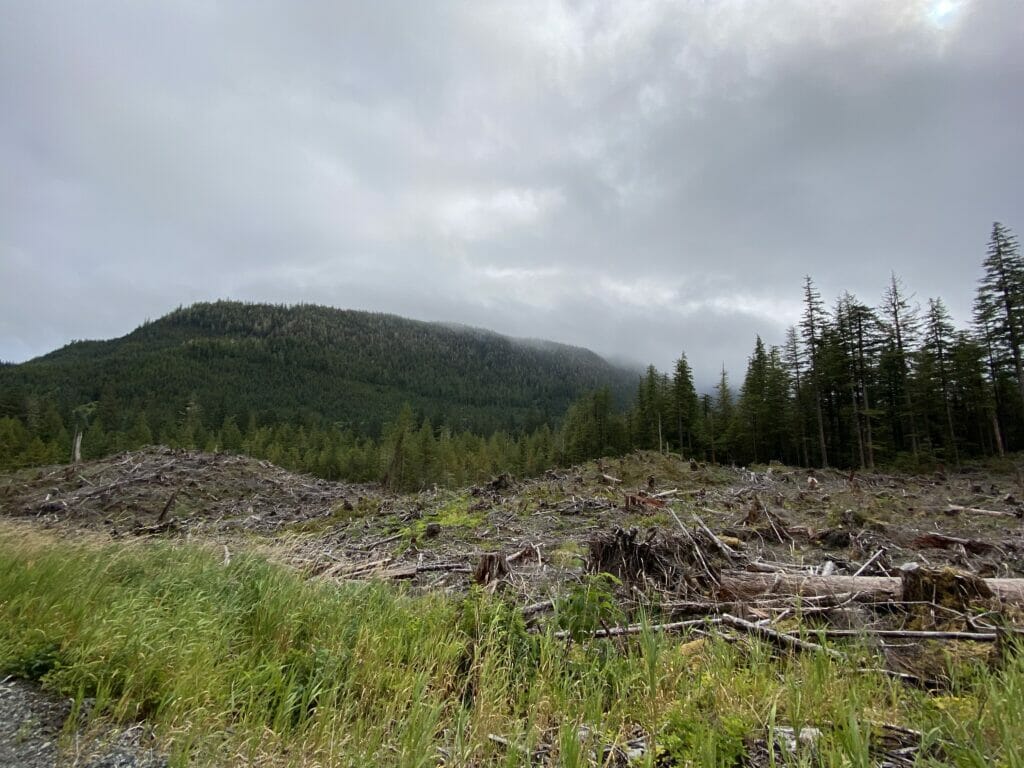
So, finding areas where the old growth remains is not easy. With rain falling steadily for days, streams in areas without heavy forest cover were blown out and muddy, which is what brought us to this spot where the Sitka spruce and massive red and yellow cedars still stand tall.
As can happen when the fishing is great, we were perhaps overly ambitious. We’d entered the creek at a bridge, plying the creek’s tannic water with streamers and bead rigs as we worked downstream. The fishing was great, but the moving was tough.
The creek — sorry, I’ve been sworn to secrecy on its name — was choked with fallen trees, many of which completely crossed the stream. And these weren’t just any trees. Many were massive relics of an old growth forest that had finally fallen after lives of hundreds of years.
The wading was challenging, but the going was even tougher out of it. Massive trunks of fallen trees blanketed the forest floor under the canopy of the standing old growth. There were plenty of bear trails but we all know that a good trail for an agile black bear is not necessarily a good trail for a human. Plus, they all petered out quickly anyway.
Still, when you know that big, hungry fish await in the next downstream pool, scrambling over, under and through nasty obstacles in pouring rain doesn’t seem too bad. So we kept going.
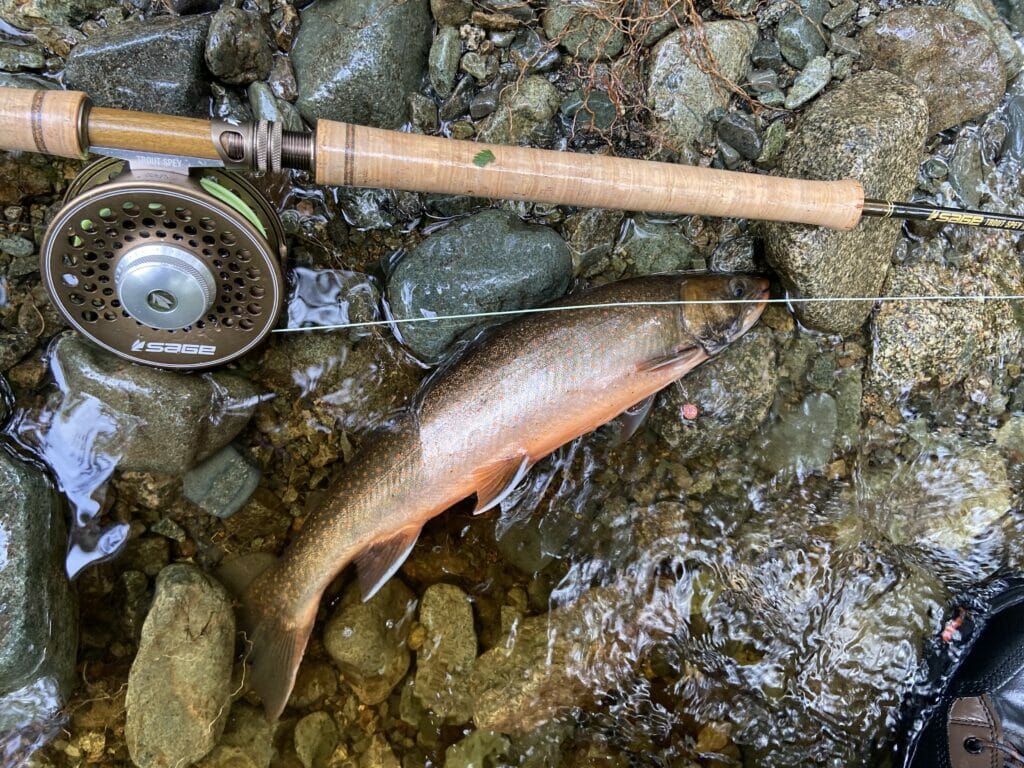
We were probably a mile downstream before we decided it was time to head back in order to beat the setting sun. And that’s when the real work started.
It seemed the smart play might be to get well up the bank where we hoped the forest might open a bit more. But, if anything, as we got farther from the water the woods seemed to get even tougher to traverse.
After 30 minutes of slogging, we were soaked on the outside from the rain and on the inside from sweat — and maybe a quarter mile back toward our Suburban.
I would be lying if I didn’t start thinking that it would have been nice to simply walk up from the stream directly to a road. But that thought was fleeting.
This creek was so amazing in large part because there was no road running alongside it.
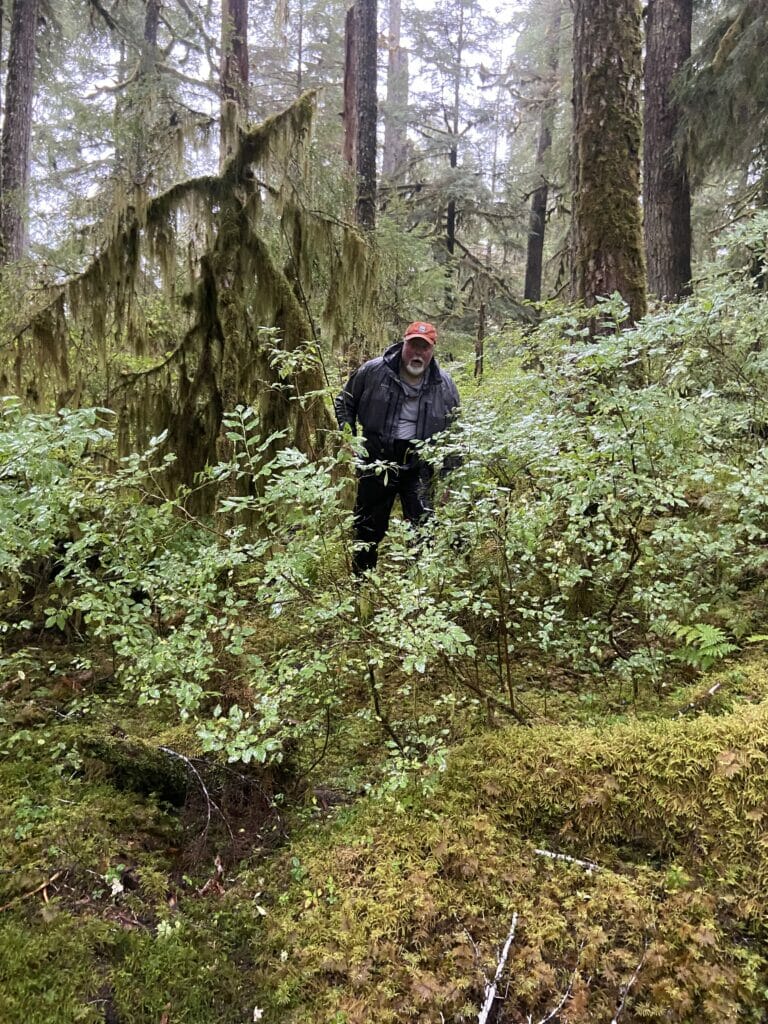
We eventually opted to get back into the water. Moving against the current and crawling over logs made it slow going, but at least we could fish pools that had been sufficiently rested since our earlier pass through.
We made it back to the rig before dark, wet and tired but grateful to have experienced a day in which the difficulty ultimately was a big part of why it was so satisfying.



